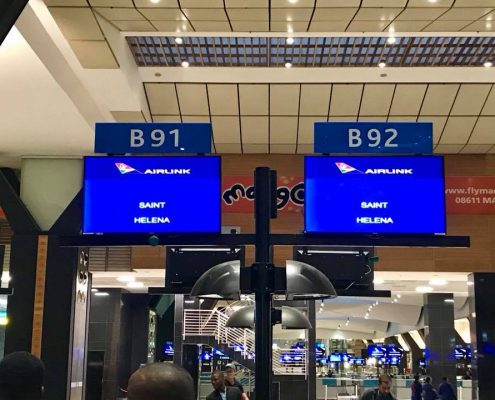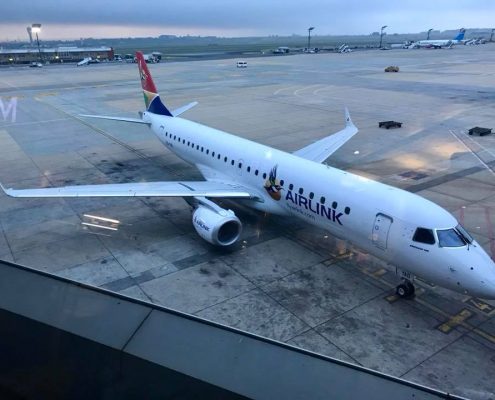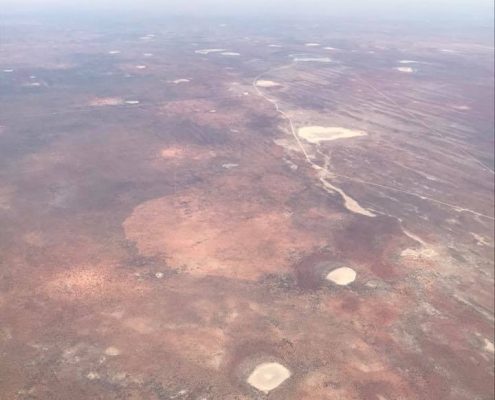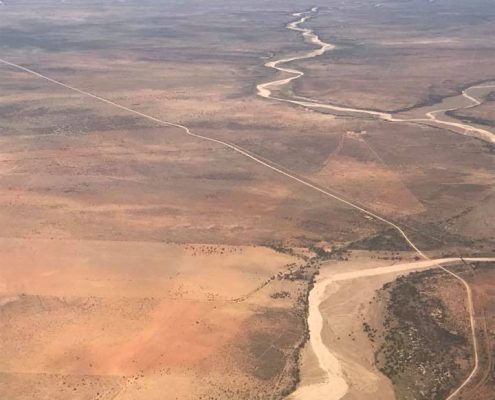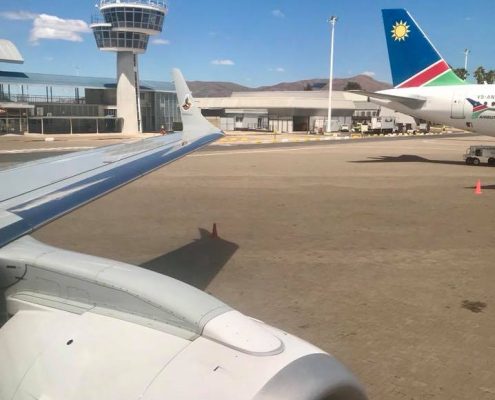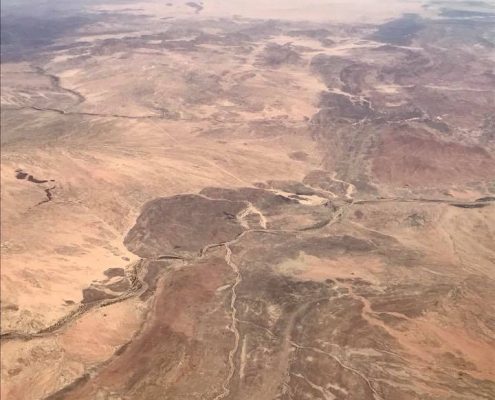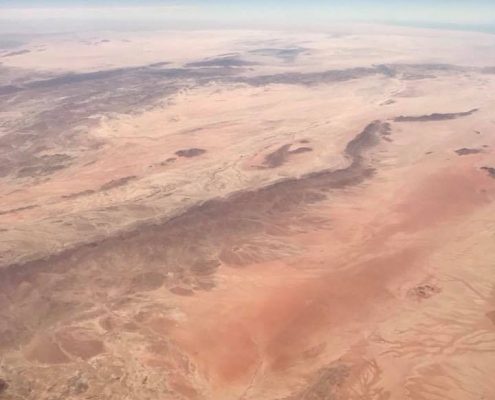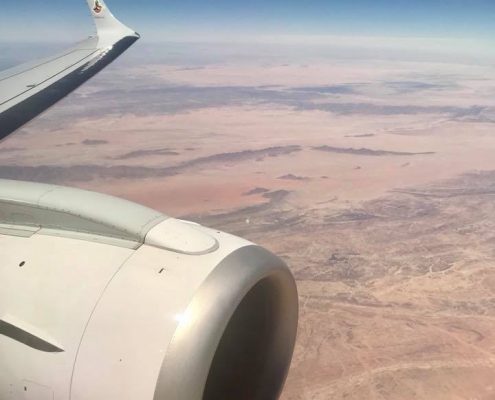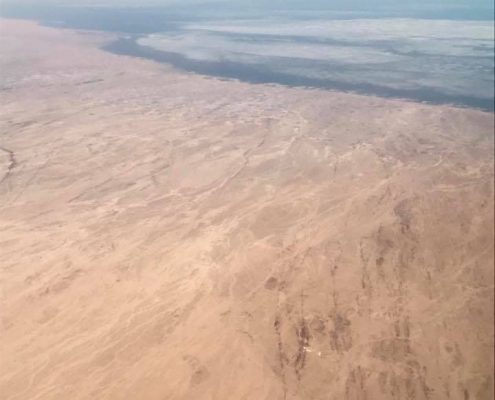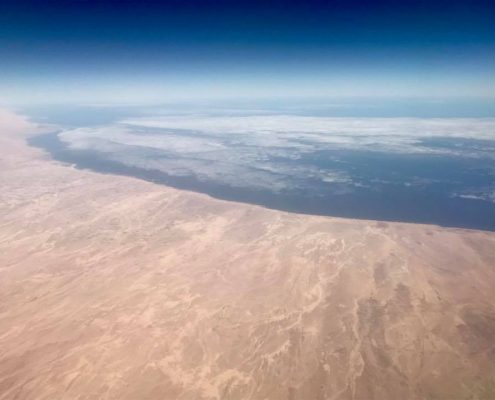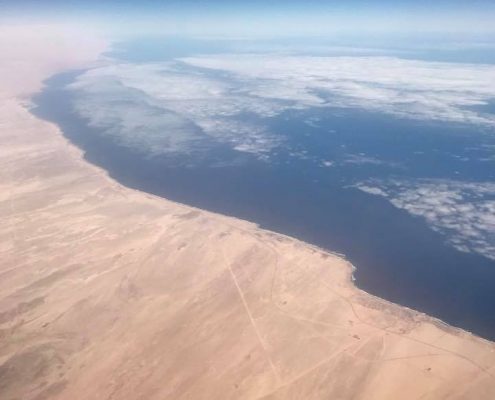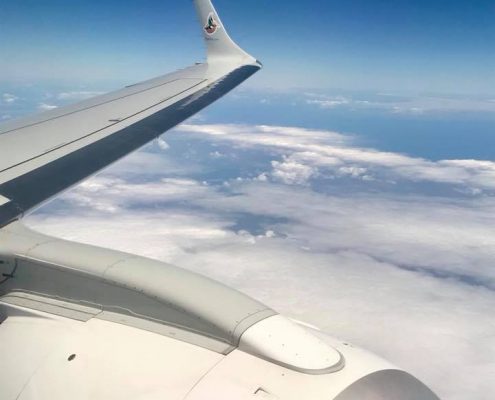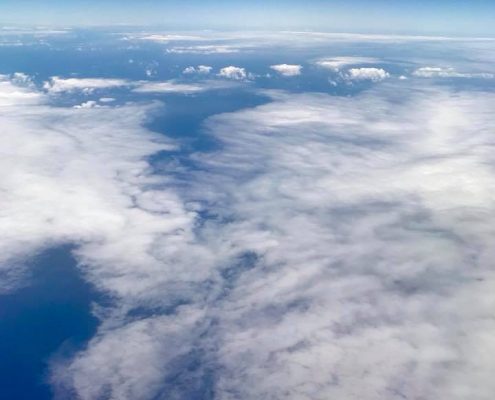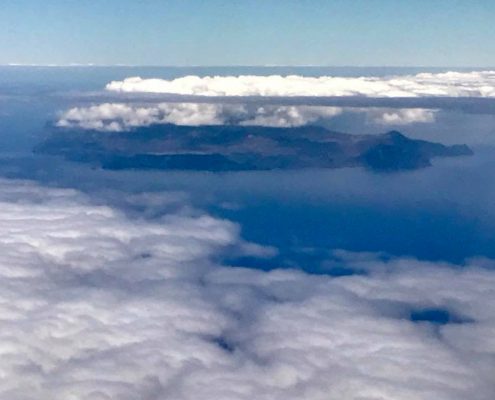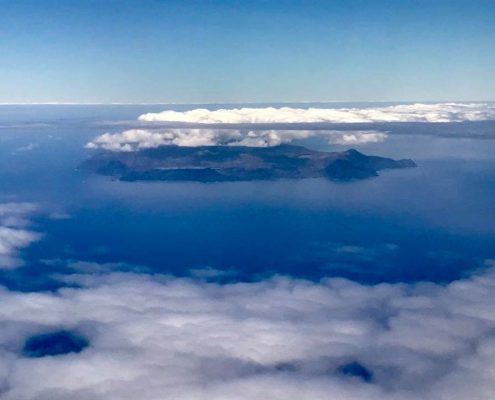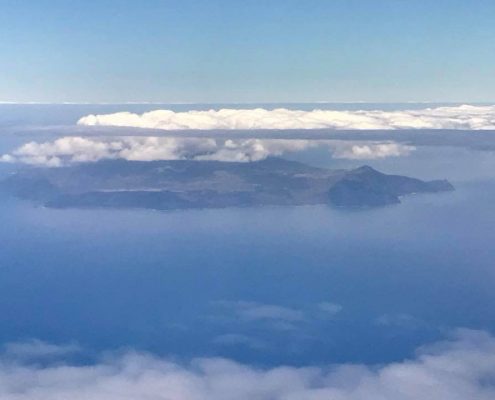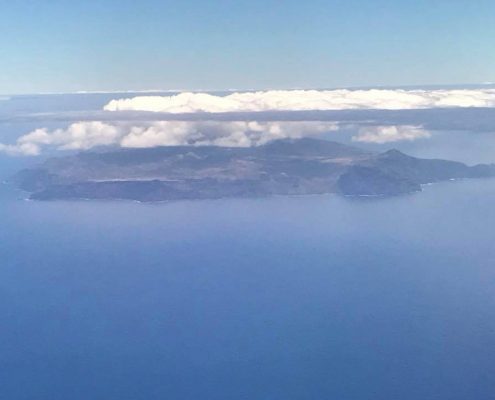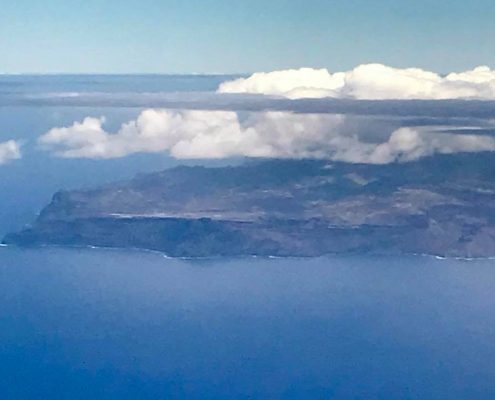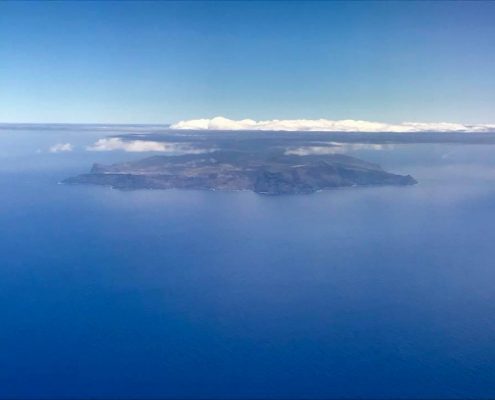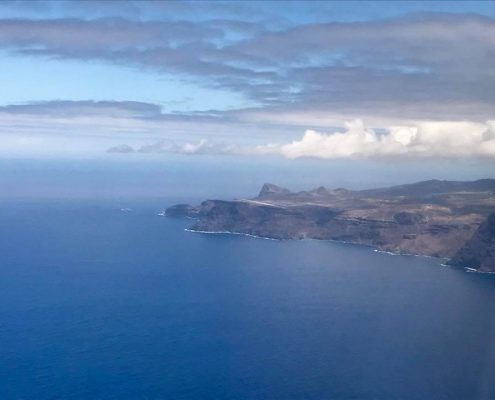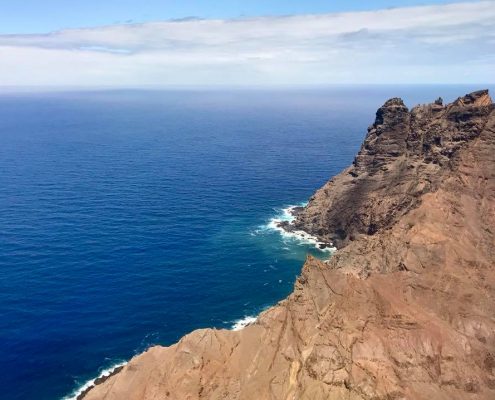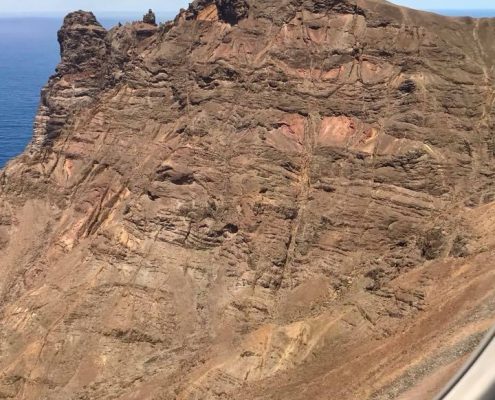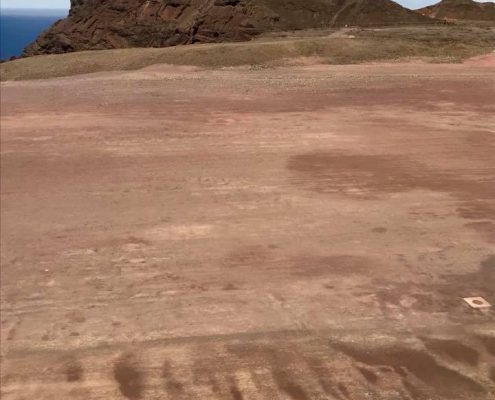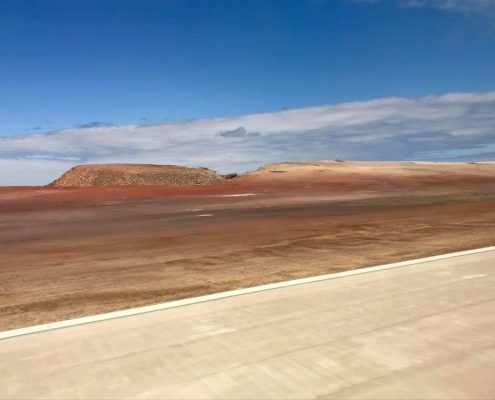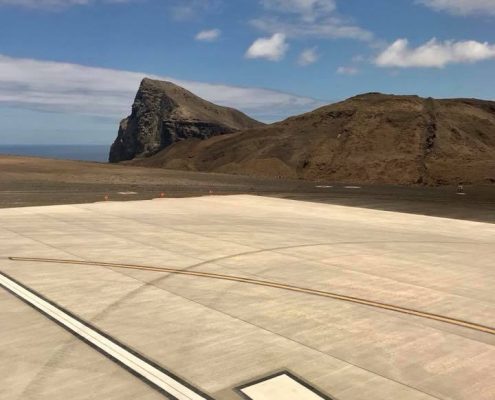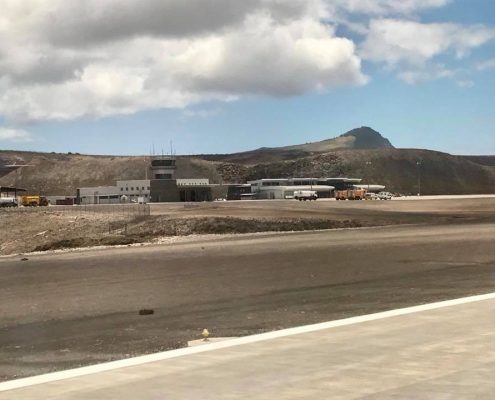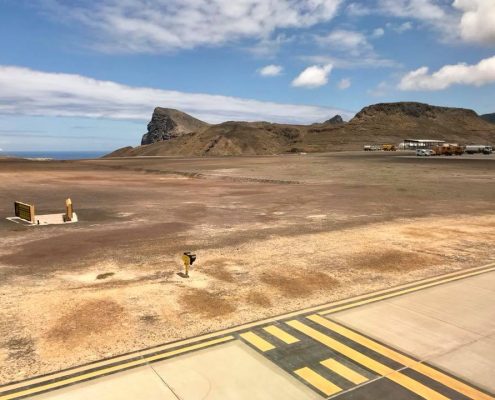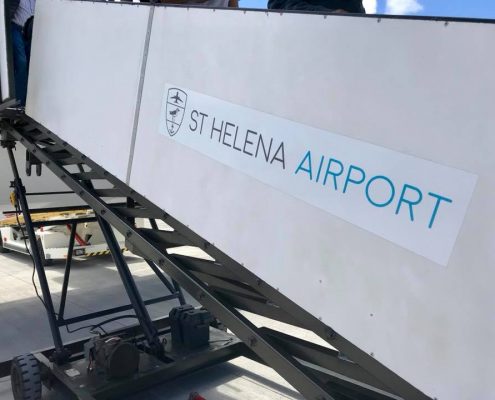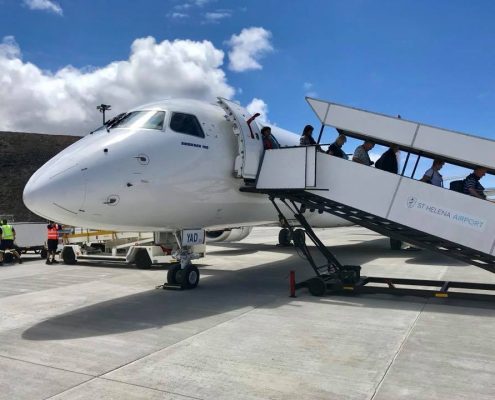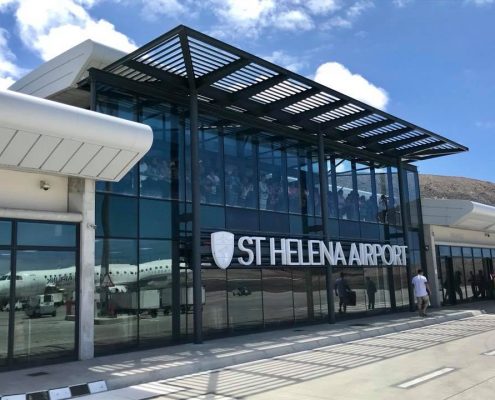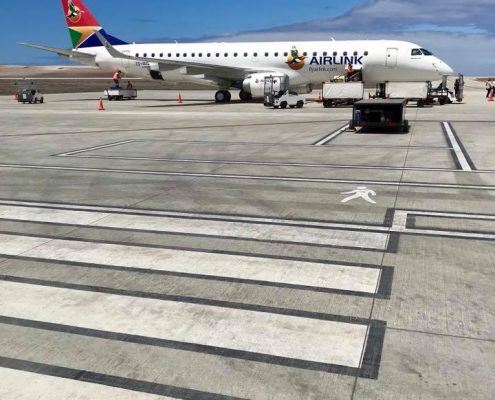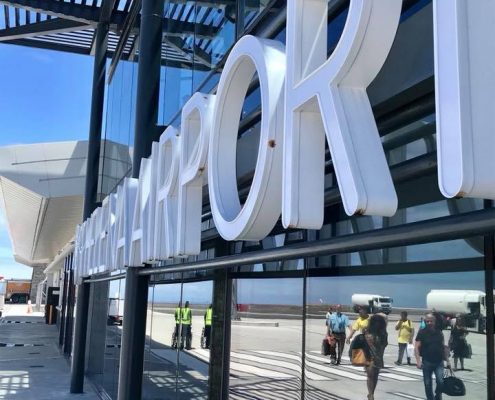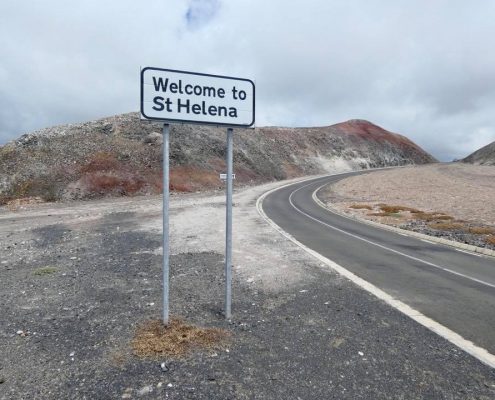Saint Helena: Flying to St Helena
Saint Helena is one of the most remote islands in the world – lying 2000km west of Africa and 4000km east of South America – in the middle of the Atlantic Ocean, on top of the mid-Atlantic undersea mountain range. It is one of the hardest countries in the world to get to and until recently, the only way of visiting was by RMS St Helena cargo vessel on a multi-day trip from Cape Town. A brand new airport was finally opened in November 2017 after a $250 million investment by the British to wean off the island from the crown’s support. The controversial airport didn’t open smoothly – the wind-shear was deemed too severe for landing from the north and the tailwinds too strong to land from the south on an otherwise short runway that ends abruptly into abyss on both sides. Finally, flying a smaller Embrayer 190 jet at 3/4 of passenger capacity was deemed doable and – voila! – the flights began. There are 4 monthly flights now from Johannesburg with a refueling stopover in Namibia. Before the flight, one needs to provide proof of substantial evacuation insurance given the remoteness of St Helena. Having boarded in Johannesburg, the flight went over the endless desert landscapes of South Africa, then landed in Windhoek in Namibia, then continued over the red desolation of the Namib Desert, passed the Skeleton Coast, and after another two hours at sea, the island finally came into view – a sheer volcanic rock sticking out from the water. The pilot warned that this is not gonna be “your typical landing” and politely suggested to “tighten those seatbelts some more” and “familiarize yourself with bracing position”. Despite the warnings, the landing was smooth and spectacular and my feet finally touched the ground of St Helena (me being perhaps more excited by this fact then was Napoleon in 1815).

